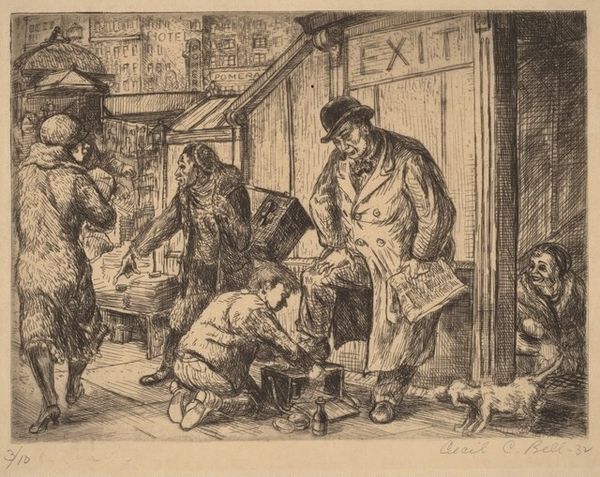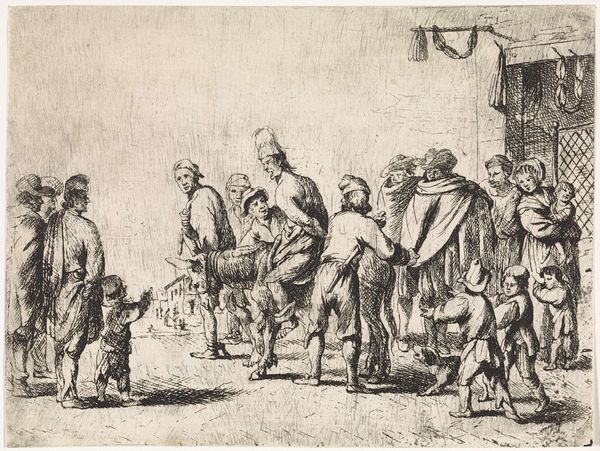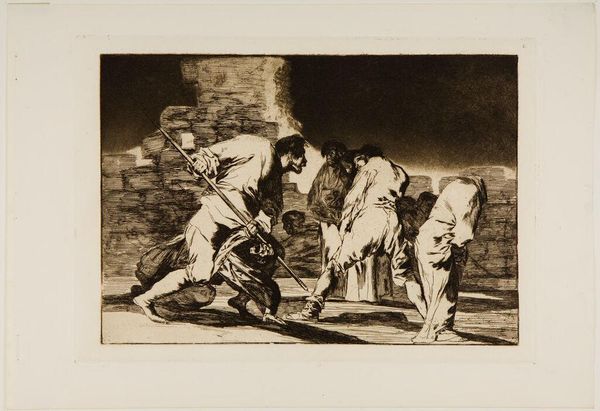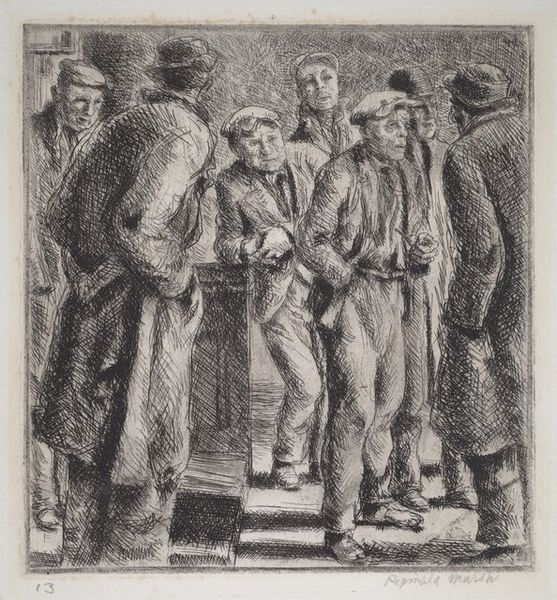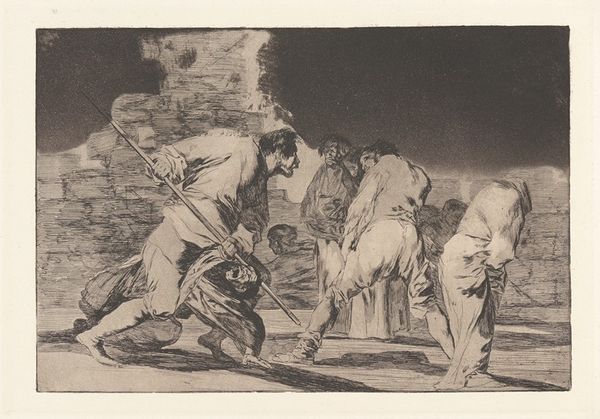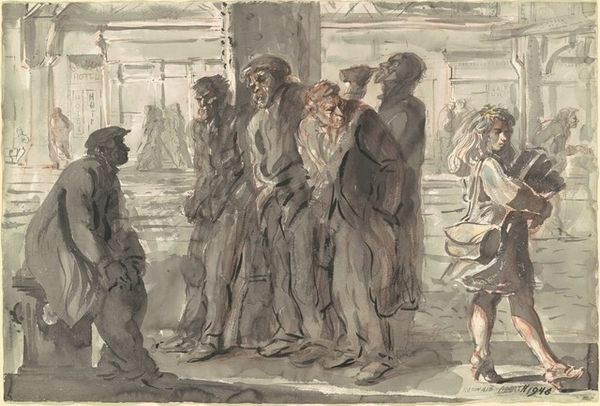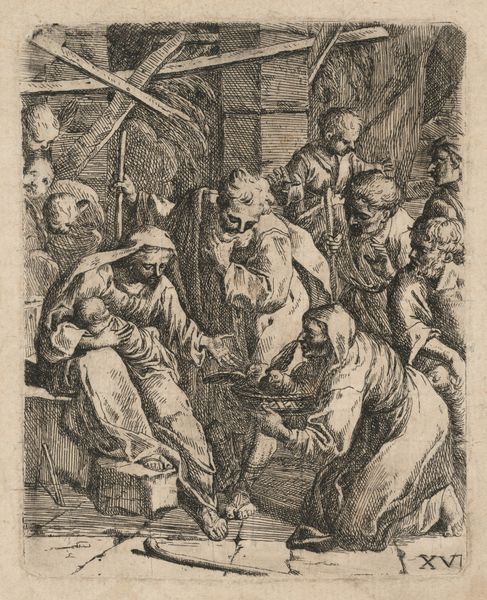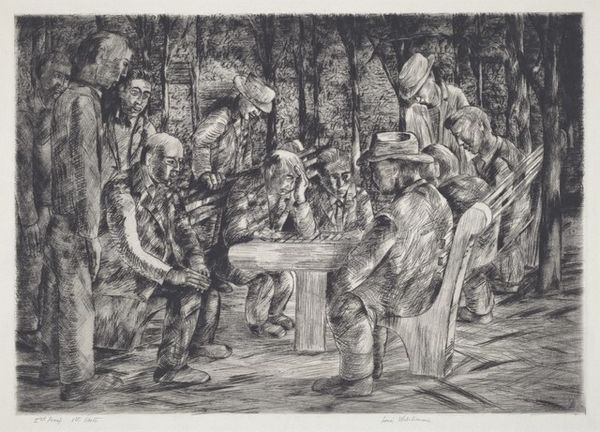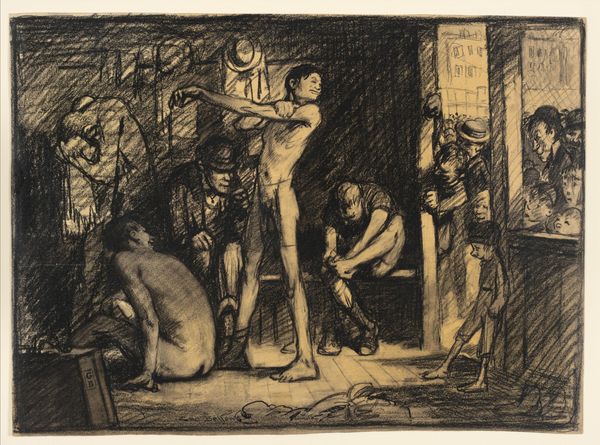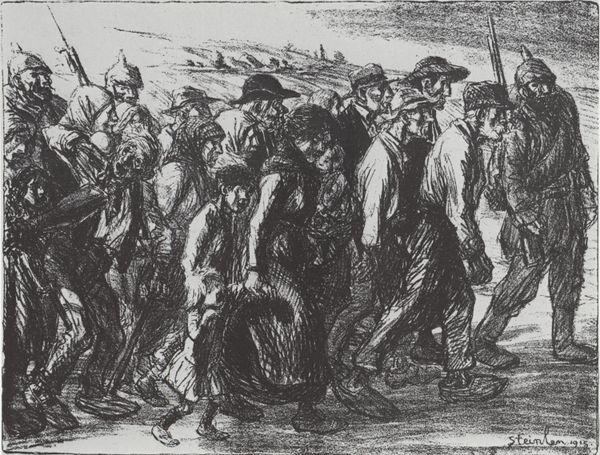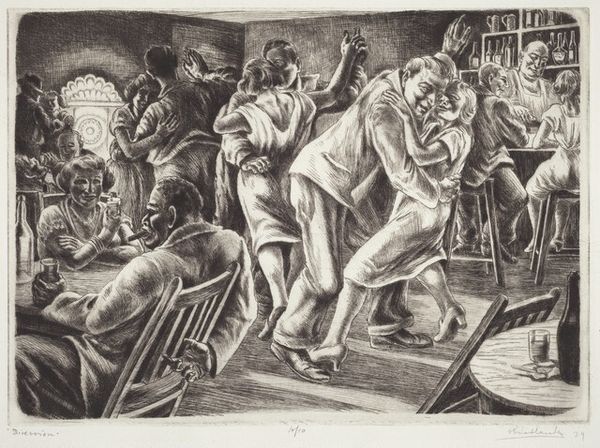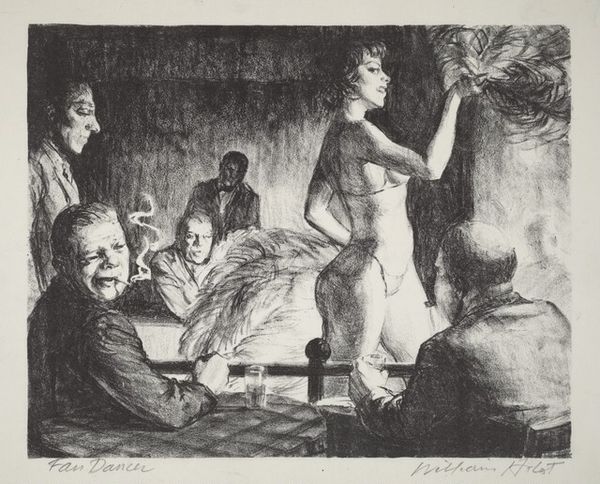
drawing, print, charcoal
#
drawing
# print
#
charcoal drawing
#
figuration
#
pencil drawing
#
group-portraits
#
ashcan-school
#
cityscape
#
charcoal
#
realism
Dimensions: image: 559 x 756 mm paper: 610 x 762 mm
Copyright: National Gallery of Art: CC0 1.0
Editor: This is "New York Jewelers Exchange," a charcoal drawing, circa 1925, by Howard Leigh. It really captures the hustle and bustle of the city. I’m struck by how the figures seem to blend into each other, almost becoming part of the urban landscape. What do you see in this piece? Curator: The composition intrigues me. Notice how the artist has organized the figures into distinct groupings using subtle tonal shifts. The foreground figures are rendered with a greater density of charcoal, emphasizing their mass, while those receding into the background display a more ethereal, sketch-like quality. It begs the question: how does the interplay between these variations of light and shadow contribute to the overall spatial organization? Editor: That's interesting, it does seem like he is drawing us to specific parts of the picture using light, and using detail on the foreground figures versus a simple outline for the background to flatten it. It makes you think about the composition itself, and not just what’s going on in the picture. Curator: Precisely. Consider too the directionality established by the figures' gazes and gestures. Although individual faces remain largely indistinct, these implied lines of sight coalesce around a central focal point—perhaps the entrance of the Exchange itself. Observe the balance achieved between linear articulation and tonal modeling. Does this structural tension contribute to your interpretation of the artwork's theme? Editor: It does add a level of intrigue. It’s not just a scene; it's carefully constructed. I originally took it at face value. Curator: Exactly, a formalist approach encourages us to delve deeper, seeking meaning within the structural elements. We learn to appreciate the inherent beauty and complexity within a work when focusing solely on its visual properties and arrangement. Editor: I'll definitely look at art differently now! Thank you for providing a more granular lens for analyzing art!
Comments
No comments
Be the first to comment and join the conversation on the ultimate creative platform.
